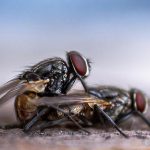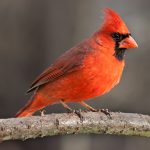Spiders are arachnids, a class of arthropods that also includes scorpions, mites, and ticks. Spiders are characterized by their eight legs, which are covered in tiny hairs that help them sense their surroundings.
Most spiders also have two body segments and chelicerae, which are jaws that they use to capture prey. Spiders are found all over the world, and they come in a wide variety of sizes and colors. Here I will list some of the biggest and I will start by talking about the biggest in total size and the one with the longest legs, so keep reading.
The World’s Largest Spiders:
- The World’s Biggest Spider In Overall Size: Is the Goliath Birdeater Tarantula with a combined size of 38cm / 15 Inches. It is also the world’s heaviest tarantula with a weight of around 170 grams.
- The Spider With the Longest Leg Span: Are Giant Huntsman Spiders. Other spiders have longer legs but the Giant Huntsman has the longest combined leg span.
Keep reading for more great facts and more interesting and great-looking spiders as we take a look at a total of 10 different big spiders, some even have funny names to them.
Giant Huntsman Spider
- Body Size: 1.8 inch – 4.5cm
- Length of legs: 12 inches – 30cm
- Scientific name: Sparassidae
The longest leg span of any spider is that of the giant huntsman. They are exclusively found in Laos, while their smaller relatives, the huntsmen, can be located all over the world, especially in warmer climes.
(For some great pictures check the video below)
The largest-ever documented giant huntsman spider had a leg span of 30 cm (12 in) leg span and 4.6 cm (1.8 in) body length
The huntsman’s legs have a twisted, splayed position that gives them a crab-like gait, but they’re swift, which they employ to chase down their target. As well as with their speed, huntsmen are notoriously deadly, to the point where a human bite will almost certainly necessitate hospitalization.
Below you can see a longer Documentary on the Ginat Huntsman Spider. (OBS. it’s around 48Min)
Goliath Birdeater Tarantula
- Body Size: Up to 5.1 inch – 13cm
- Weight: Around 6.2 oz – 170 gram
- Length of legs: 27cm
- Scientific name: Theraphosa blondi
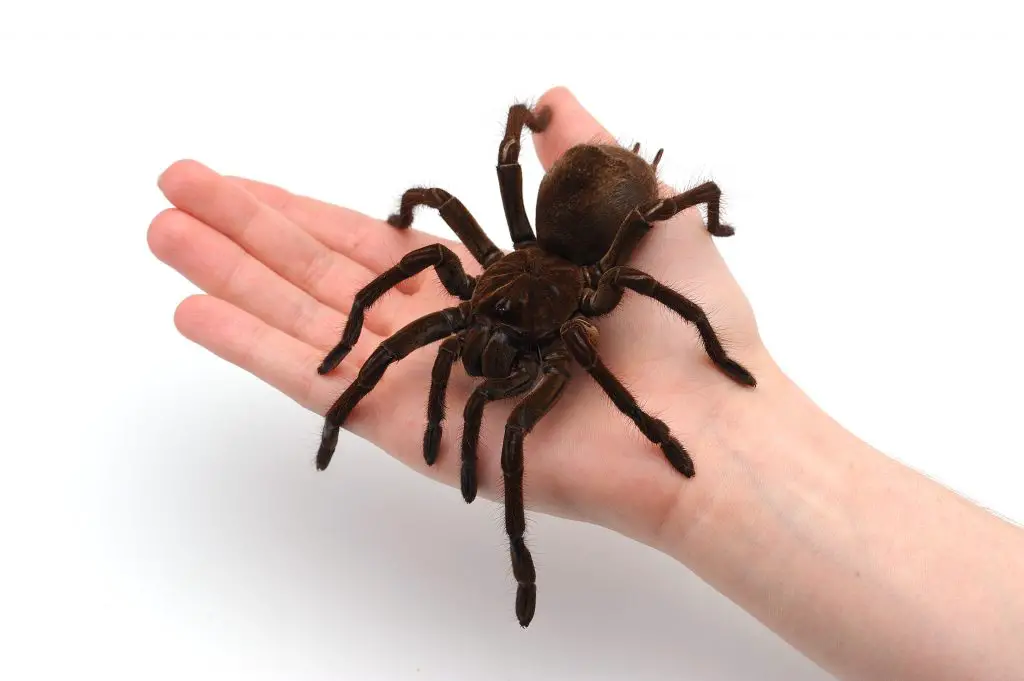
When it comes to size, the Goliath birdeater is unsurpassed. Weighing around 170 grams, it is also the world’s heaviest tarantula. They dwell in the swamps and woods of northern South America, however despite their name they don’t often prey on birds. Instead, they prefer to feed at night on invertebrates such as rodents, mice, frogs, and lizards, which they catch with their long tongues and swallow whole.
It is possible for these spiders to attack and deliver toxin that is similar to that of a wasp sting to humans. They use their hairs to create a hissing sound that can be heard from many meters away as a kind of protection. When threatened, they will often rear up on their hind legs and expose their teeth, or they can discharge their barbed hairs at assailants, which can lodge in the skin or eyes and cause discomfort for several days after the incident.
Hercules Baboon Spider
- Body Size: 9-10cm
- Length of legs: 26-28cm
- Scientific name: Hysterocrates hercules
Africa is their native country and they are known for being huge and ferocious, but they haven’t been observed in the wild since 1900. One was taken about this period in Nigeria and is currently on display at the Natural History Museum. Their name is supposed to come from the likeness among their legs and a baboon’s finger.
The king baboon spider, a little smaller near cousin of the Hercules baboon spider, digs into grassy soil and weaves webs over its tunnel entrance to trap food.
Brazilian Salmon Pink Birdeater
- Body Size: more than 15cm
- Length of legs: 24-25cm
- Scientific name: Lasiodora parahybana
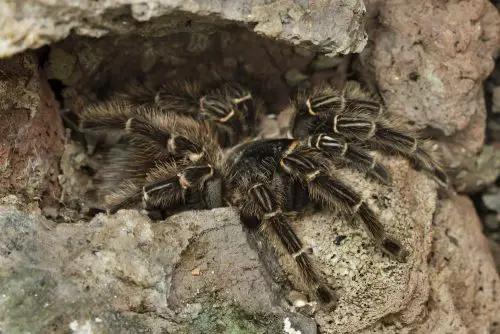
This type of spider lives in the Brazilian jungles, and their offspring are pinkish all over. However these spiders are thought to be friendly, when disturbed, they may administer a cat-like bite using their 2-centimeter teeth, with no poison that can harm people.
Apart from their striking appearance, they reproduce effortlessly in captivity and do not spin enormous webs or burrow, making them excellent exhibition tarantulas.
Grammostola Anthracina
- Size: more than 18cm
- Length of legs: 24-25cm
- Scientific name: Grammostola anthracina
Argentina, Brazil, Paraguay, and Uruguay all include Grammostola anthracina, which is a member of the tarantula family that may be found in scrub, arid environments, and grasslands. Insects, tiny reptiles, and invertebrates such as mealworms, cockroaches and grasshoppers, etc comprise the majority of their food.
Grammostola anthracina, sometimes known as the Brazilian salmon pinkish bird-eater, is a species of bird-eater that is popular as a pet owing to its appearance, size, and behavior. In captivity, they have been seen to survive for around twenty years.
Chaco Golden-Knee
- Size: more than 15cm
- Length of legs: 23-24cm
- Scientific name: Grammostola pulchripes
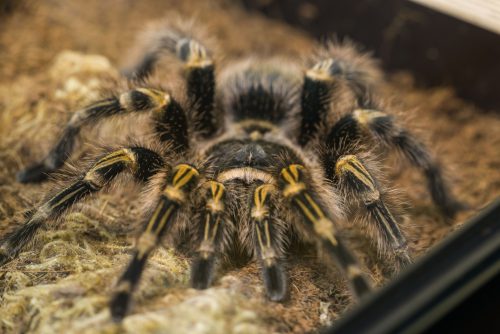
These are also species of New World tarantulas, found in the plains of Argentine and Paraguay. These are burrowing animals rather than web producers, feeding on insects smaller than themselves.
Even though these are one of the biggest spider species in the world they are called gentle giants, possessing a laid back, submissive demeanour. It’s still advised avoiding clear of handling them however, since their bite is akin to a wasp sting.
Colombian Giant Tarantula
- Size: more than 10cm
- Length of legs: 19-23cm
- Scientific name: Megaphobema robustum
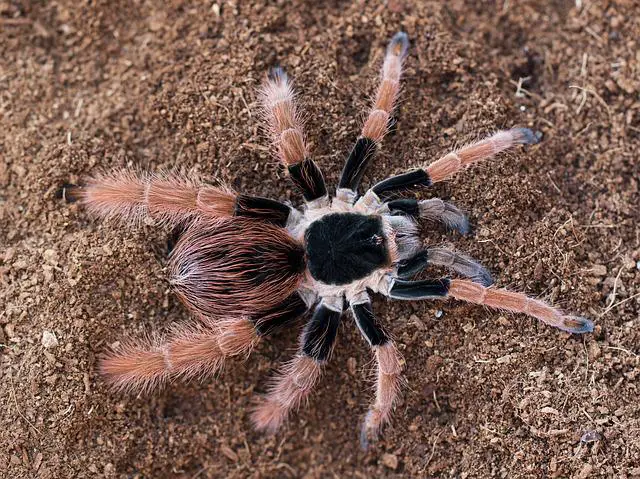
Known as the Colombian gigantic tarantula, it may be found in the Amazon rainforests of northern Brazil and Colombia. It is also referred as the Colombian big redleg. However, despite the fact that they are not poisonous, these spiders are considered to be quite aggressive, frequently spinning and lashing out with their spiky back legs. If you happen to come across one in the wild, keep your distance!
In the same way that most of the other spiders on this list do, Colombian gigantic tarantulas subsist on a diet that includes mice, tiny reptiles, and huge insects that they can catch.
Face-Sized Tarantula
- Size: more than 12cm
- Length of legs: 19-20cm
- Scientific name: Poecilotheria rajaei
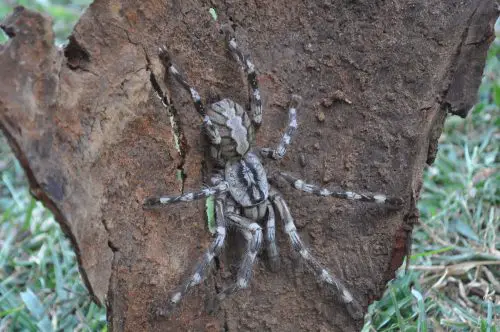
Despite its weirdly descriptive name, the face-sized tarantula is one of very few tarantula species which are not native to South America. Instead, they may be found in ancient constructions and large trees in Sri Lanka and southern India, where they can be found in old buildings and old-growth trees. They were eventually discovered in 2010 after years of speculation.
Despite the fact that their stings are not fatal to people, their poison allows them to kill creatures as large as mice, lizards, small birds, and snakes before devouring them.
Camel Spider
- Size: more than 7cm
- Length of legs: 14-15cm
- Scientific name: Solifugae
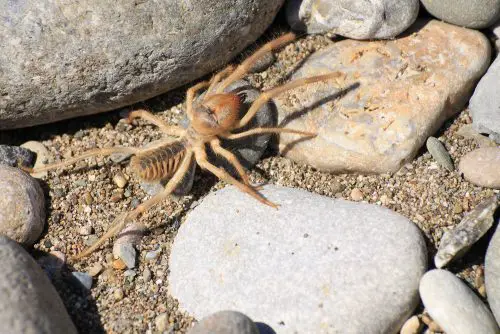
The camel spider, which may be located in all hot deserts and savannahs on all continents with the exception of Australia, is not truly poisonous. It is also not a spider, but rather an arachnid with a menacing appearance that is the stuff of tales.
As the Iraq war raged on, rumors began to surface about the camel spider, a spider that preyed on sleeping soldiers and camels from within their bodies.
We are fortunate in that the rumors were unfounded, and while camel spiders do employ digestive juices to liquefy their targets’ flesh and have jaws that really are one-third the size of their 15-centimeter body length, they are not deadly to humans. The bite was extremely painful, yet there was no poison or death as a result of it.
Brazilian Wandering Spider (The Most Venomous Spider)
- Size: more than 5cm
- Length of legs: 14-15cm
- Scientific name: Phoneutria fera
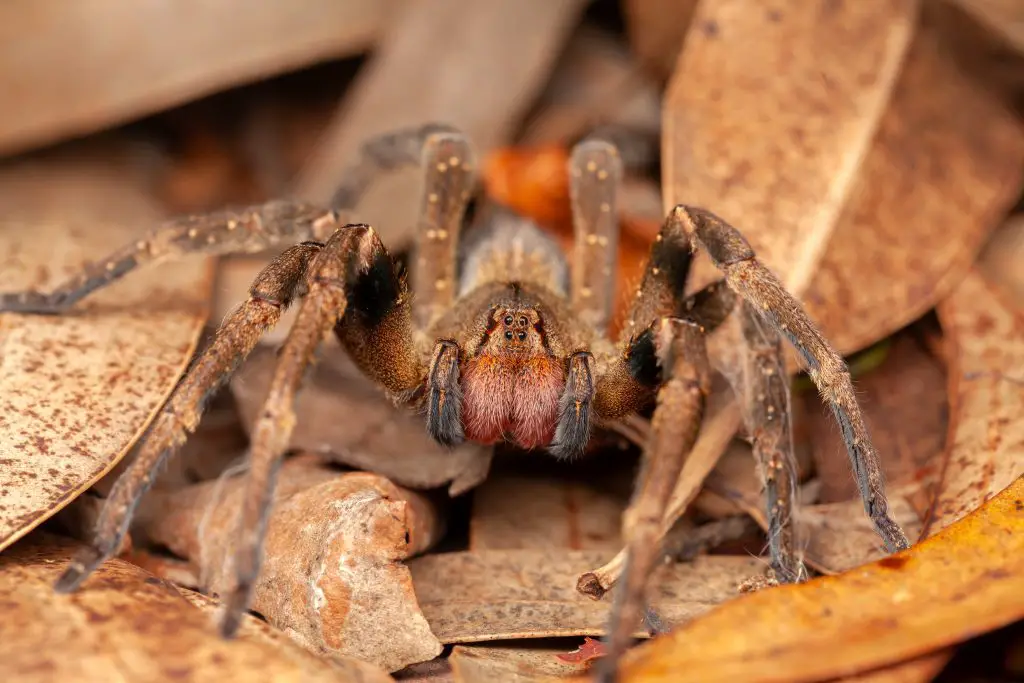
Walking spiders, also known as Brazilian wandering spiders, receive their name from their habit of walking around on the forest floor at night and, rather than building a web, sleeping under banana trees or insect mounds during the day. Its Latin name (Phoneutria) derives from the Greek word for murderess (Phoneutria), which implies that they are quite lethal.
these are frequently referred to as having the world’s most lethal spider poison, based on research in which mice were killed with a single injection of 0.006 mg of venom, which was conducted in Brazil. The use of anti-venom for therapy is only required in about 2 percent of spider bite cases, according to other sources.
The fact is that the poison of the Brazilian wandering spider is incredibly strong, however, it is not especially effective at injecting it into humans. Nonetheless, try to avoid its venomous bite at all costs.
Cerbalus Aravaensis
- Size: more than 3cm
- Length of legs: 14-15cm
- Scientific name: Phoneutria fera
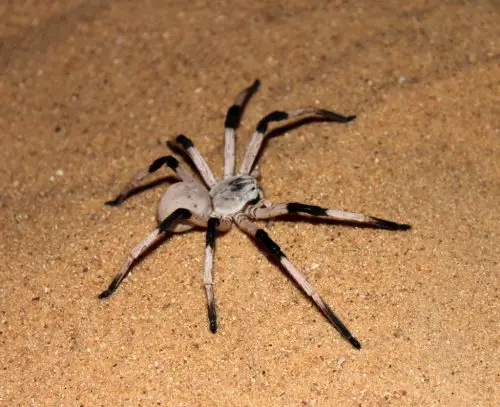
Exclusively the Arava Valley in Israel and Jordan lives the Cerbalus Aravaensis, a huntsmen spider that is highly uncommon and only found there. These nocturnal sand dwellers build their dens in sand dunes and the sand of salt marshes, concealing the entry with a sliding cover constructed of sand and glue to keep predators at bay.
Agriculture and sand quarries are threatening the survival of this spider, which is the most endangered species on the list due to the degradation of its restricted habitat.
Are Cockroaches More Likely to Crawl on You at Night if you Have a Fear of Spiders?
If you have a fear of spiders, you may wonder if it increases the chances of cockroaches crawling on you at night. While these two fears are unrelated, cockroaches are more drawn to areas with food and water sources rather than human phobias. So, your fear of spiders alone does not make you more likely to encounter cockroaches crawling on you at night.
Conclusion:
These massive spiders can be found in tropical regions all over the world. Although they may be daunting in size, spiders are generally harmless to humans. In fact, many species are beneficial, as they help to control populations of harmful insects. Next time you see giant spiders, take a moment to appreciate these remarkable creatures.


